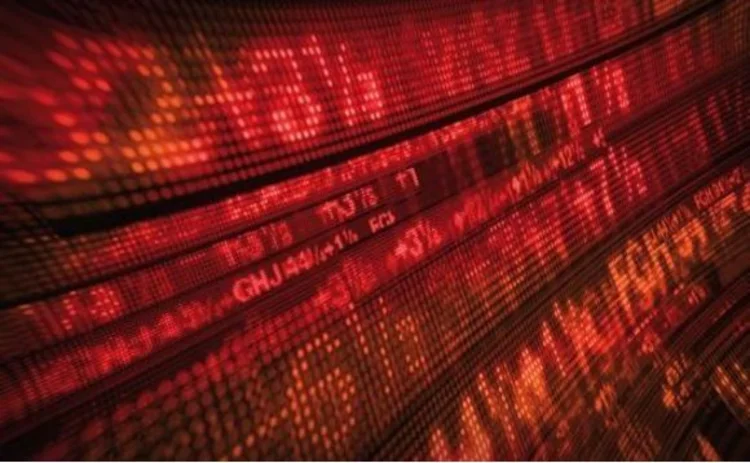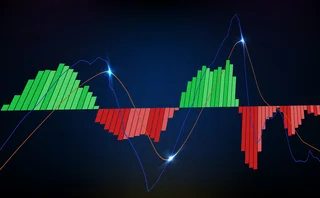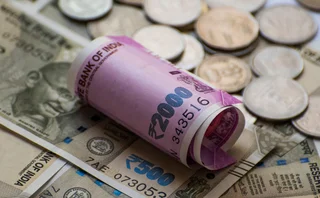
Dividend rout blamed on hedge fund short positions
Some bankers say hedge funds are behind the dramatic fall in dividends on May 7

(Updated on May 28): Hedge funds that shorted European dividends saw a spectacular return when Eurex-listed dividend futures suffered their biggest one-day fall on Friday May 7. Bankers say one fund went short in particularly large size just a day earlier, when the 2011 contract for Eurostoxx 50 dividend futures closed at 105. By the end of trading on the Friday, the market had fallen to 93 - a collapse of more than 11% that would translate into a gain of around €11 million on a trade of 10,000 contracts. In total, 110,000 contracts traded during the week.
A number of dealers say New York-based Moore Capital was the most active of several shorting funds. However, a source close to Moore claims the fund was reducing an existing long position rather than going outright short dividends.
The cause of the dividend market's Black Friday is disputed. The obvious culprit initially appeared to be the previous day's ‘flash crash' in the US, which saw the Dow Jones Industrial Average index dive 600 points in a matter of minutes. Some dealers, though, argue the heavy shorting activity by hedge funds was the trigger.
Banks are typically long dividends as a result of their structured products businesses, so the additional long exposure the Street acquired from its fund counterparties forced dealers to hedge in a market where no-one was able to take further dividend exposure. In effect, the short trades were self-fulfilling.
"Dealers ended up buying a decent chunk of dividends on Thursday. Those volumes weren't crazy and could have been recycled in normal market conditions. But overnight we had this very bizarre thing in the US, with the Dow dropping more than at any time since 1987. That shocked the market and when people got to their desks on Friday, all the bids in the dividend market had backed away," says an equity derivatives trader at one European bank.
As a result, when one of the counterparties to the funds' trades tried to cover its long position, it found the dealer community was unwilling to trade in any volume, says a London-based equity derivatives trader at one UK bank.
"A large portion of the market had got very long as a result of these trades overnight and didn't want to get any longer, so there wasn't much support in the interbank market," says the London-based trader. "For the first time, we saw the majority of volume going through on screen. It looked like someone was picking off the market-makers - every time one of them showed a bid in 50 or 100 lots, it would get hit and that just drove the market lower."
At one point on May 7, the Eurostoxx 2011 dividend futures contract went as low as 91 - "stupid levels", says the head of flow equity derivatives at one European bank. That kind of figure would imply no dividend at all next year from any of the banks in the Eurostoxx index and a 50% cut in insurance company dividends, says the European bank's trader: "That's obviously very, very pessimistic. Our own base expectation is for 2011 dividends to reach 120 or 125, with an absolute worst case of 105."
While the collapse initially looked like a blip when traders returned to their desks on May 10 - the December 2011 future rebounded to 101.8 - the whole dividend curve proceeded to disintegrate over the next fortnight. Contracts at the short end of the curve - December 2011, December 2012 and December 2013 - dropped from 101.8, 99.5 and 100.4 on May 10 to 94.1, 87.8 and 86.8 on May 20, respectively.
The move has been put down to broad selling by the non-dealer community sparked by the rout on May 7. "The drop in implied dividends is a function of a lack of liquidity and some large-scale selling," says Pam Finelli, an equity derivatives strategist at Deutsche Bank in London. "It underscores that we are in an environment where people are unwinding risk trades. Even though the dividend market has grown tremendously and has a more diversified investor base, if there is large-scale selling and panic unwinds, it causes a bit of alarm and may drive additional de-risking."
Despite a slight rebound in futures prices - the December 2011 and December 2012 contracts traded at 100.4 and 95.7, respectively, on May 27 - strategists argue there is still an opportunity to profit at the short end of the curve.
"From a rational standpoint, it doesn't make any sense for dividend futures to move more than the index. If you look back over the past month, the way the front end of the curve has been moving is surprising. It should be much stickier than equity prices. A 25% drop over the next two years and then no growth priced into the curve is incredible. But this means there is an opportunity that exists now because there is a liquidity premium, especially on the shorter end of the curve. No matter what happens in the market, the December 2011 and December 2012 contracts should move closer to fair value," says Finelli.
Only users who have a paid subscription or are part of a corporate subscription are able to print or copy content.
To access these options, along with all other subscription benefits, please contact info@risk.net or view our subscription options here: http://subscriptions.risk.net/subscribe
You are currently unable to print this content. Please contact info@risk.net to find out more.
You are currently unable to copy this content. Please contact info@risk.net to find out more.
Copyright Infopro Digital Limited. All rights reserved.
As outlined in our terms and conditions, https://www.infopro-digital.com/terms-and-conditions/subscriptions/ (point 2.4), printing is limited to a single copy.
If you would like to purchase additional rights please email info@risk.net
Copyright Infopro Digital Limited. All rights reserved.
You may share this content using our article tools. As outlined in our terms and conditions, https://www.infopro-digital.com/terms-and-conditions/subscriptions/ (clause 2.4), an Authorised User may only make one copy of the materials for their own personal use. You must also comply with the restrictions in clause 2.5.
If you would like to purchase additional rights please email info@risk.net
More on Equity markets
The future of equity derivatives: perspectives for UK equities and dividends
Managing equity and dividend risk today requires new trading strategies and products. In a webinar convened by Risk.net and hosted by Eurex, three experts discuss what’s next for the UK and European markets.
Follow the moneyness
Barclays quants extend Bergomi’s skew stickiness ratio to all strikes
What gold's rise means for rates, equities
It has been several years since we have seen volatility in gold. An increase in gold volatility can typically be associated with a change in sentiment and investor behavior. The precious metal has surged this year on increased demand for safe haven…
Breaking the collateral silos – Navigating regulation with a strategic alternative
Emmanuel Denis, head of tri‑party services at BNP Paribas Securities Services, discusses why financial institutions must rethink old practices of collateral management and instead adopt a tri-party approach, with which equities can be managed as…
BAML and Morgan Stanley shift Indian P-notes to Europe
Tax changes trigger move out of Mauritius and Singapore
Volatility traders wrestle with digital risk of Brexit
Skew on major indexes leaps after market wakes up to risks of UK's referendum
New US tax rules could hamper ETN market, dealers warn
IRS’s forthcoming Section 871(m) rules could inadvertently capture legacy ETNs
Dealers fear death of dividend risk premia strategy
Shrinking dividend futures premium hurting investors







